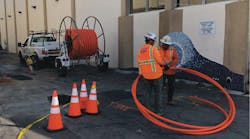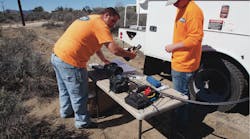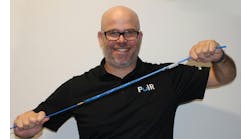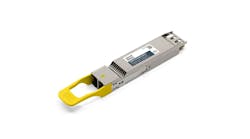Related to
Latest from Fiber Installation/Deployment
Google Can’t Make You an FO Expert
Be Discerning in HOW You Choose to Learn
Earlier we covered how fiber optic techs learn on the job. Check out the July article here: https://www.isemag.com/fttx-optical-networks/article/14276852/its-not-about-the-toys.
This time we'll look at online resources that can help or hurt based on how carefully you evaluate the information.
When I became interested in fiber optics in the late 1970s, learning about this new technology was difficult. Fortunately, I lived in Boston, a center of activity in fiber optics, and my home was near MIT. The MIT library had a few papers on fiber optics which I read, noting that one author was a professor at MIT. I walked over to his office, introduced myself and asked if he could help me. And he did.
Finding a page about a topic in fiber optics among the 147,000,000 pages on Google can make finding a needle in a haystack seem easy.
Until the Internet became available, that was how we learned things. We depended on personal contacts, manufacturers’ literature, magazines and books for technical information. At one point in the early 1990s, I had two shelves of books and several filing cabinets of technical material for my own reference library on fiber optics.
Now we depend on the Internet for information. We read web pages on products, application notes, technical information and watch videos. We also take advantage of online learning, taking courses that enhance our knowledge and help us understand the processes used in fiber optic installation.
Sounds like you can learn anything online, right? Well, there are a few problems.
1. Finding the RIGHT Information
When I created the first web page for my company, FOTEC, in 1994, it was one of only about 30,000 web pages. Over the next few years, the Internet took off and millions of web pages were created. Fortunately, search engines were invented too.
I did a Google search for "fiber optics" and it tells me there are 147,000,000 references to fiber optics on the Internet. What a difference the Internet and worldwide web have made. A smartphone, tablet or PC can help you access a nearly infinite number of resources on any aspect of fiber optics. Need instructions or videos on how a particular fusion splicer works? Placing fibers in a dome splice closure? How to perform an insertion loss or OTDR test? A few minutes searching online can get you the information you need on the exact product you are using.
If everything is online, all our problems are solved, right? Not exactly. The first problem is finding the technical detail of exactly what you want to learn. Finding a page about a topic in fiber optics among the 147,000,000 pages on Google can make finding a needle in a haystack seem easy. You must know the right term to search for and then run the gauntlet of online ads before you get to the search results. (For fewer ads, try the "DuckDuckGo" search engine instead.)
Going directly to manufacturers' websites is often faster if you know which company's products interest you or think they may have the technical material you need. Some manufacturer's websites are simple and easy to find information, but some are not. Usually, I go first to the website sections like products, support, or their search feature. If that doesn't work, I'll call or send them an email asking for help. Sounds a bit like the old days, in my opinion.
2. Deciding What Is Misinformation and What Is Not
We all know the Internet is full of misinformation. That can be the case with true technical topics as well. My pet peeve is how practically every website incorrectly illustrates the construction of optical fiber.
A couple years ago, I noted that 25% of those taking the FOA CFOT certification exam missed one simple question, "What do you strip when you strip fiber for splicing or termination?" One out of four chose the wrong answer, the cladding, not the buffer coating on the fiber. Techs pointed out that every drawing on the Internet showed the core of the fiber sticking out beyond the cladding. Understandably, they assumed the core and cladding were separate and you stripped the cladding off when you stripped the fiber. Very seldom did techs see images specifying the correct way to strip fiber, removing the budder coating and leaving the glass fiber. (See Figure 1.)
I've been imploring those companies to change their fiber diagrams for years, but few have changed.
While misinformation may not be intentional, it can be dangerous. That’s why the FOA technical advisors created textbooks, and later shared the same information on the FOA website. Today, technicians can cross-reference what they “think” they know from a general Internet search to what is detailed in our technical learning covering everything from how fiber works to coherent communications systems.
3. Choosing the Right Combination of Learning Tools Strategies
Online learning grew astronomically during the pandemic. When it became difficult to teach students in a classroom, online courses were the best solution, and everybody started offering them. The FOA has been a pioneer in this area, with the online learning site Fiber U (fiberu.org). During the pandemic, the number of techs taking Fiber U courses quadrupled.
Online learning is great for gaining knowledge, but fiber techs also need to develop skills in the hands-on processes used for installation like cable preparation, splicing, termination and testing. It's not easy to develop skills online like you can in a traditional in-person class. If you have access to the proper equipment, following online directions can lead you through the process and help you learn on your own. Still, hands-on learning cannot be replaced.
If you are interested in an online course, we recommend you evaluate the course first. What does the course cover? The technical quality is only as good as the course creators and the information base they use. Also, look at sample lessons; the delivery methods of some courses seem to be using software aimed at kids, not adults, and can be frustratingly slow paced.
This summer, The Biden-Harris Administration1 got behind the importance of creating workforce development programs that can help fill high quality jobs that help rebuild US infrastructure and supply chains. The administration made a nationwide call to action for employers, education and training providers, states, local, Tribal, and territorial governments, and philanthropic organizations to make tangible commitments that support equitable workforce development. You can read more about how employers should work to support their employees with high-quality training by visiting: https://www.isemag.com/industry-trends-and-research/article/14278435/talent-pipeline-challenge.
The bottom line is this. ONE form of training is not the best way to learn. Multiple forms of learning including via textbooks, manufacturers’ training, expert hands-on guidance and on-the-job training are a well-rounded approach to becoming a competent technician in fiber optics.
Be a discerning consumer of training and you will be on the right track to growing your fiber optic expertise.
REFERENCES AND NOTES
1. https://www.whitehouse.gov/briefing-room/statements-releases/2022/06/17/fact-sheet-the-biden-harris-administration-launches-the-talent-pipeline-challenge-supporting-employer-investments-in-equitable-workforce-development-for-infrastructure-jobs/
For more information, email [email protected] or visit www.jimhayes.com.
To learn more about The Fiber Optic Association, visit www.thefoa.org. Follow them on Facebook: FiberOpticAssociation, LinkedIn: company/the-fiber-optic-association-inc-foa, Twitter @fiberopticassoc, and YouTube: user/thefoainc.

Jim Hayes | Fiber Optic Expert
Jim Hayes is the Fiber Optic Expert columnist for ISE Magazine. He is a lifelong techie who has been involved in the fiber optic industry since the late 1970s. He founded one of the world's first fiber optic test equipment companies, FOTEC, which was acquired by Fluke in 2000, and he was a co-founder of the Fiber Optic Association (FOA), the international professional society of fiber optics, in 1995.
Jim is a writer and trainer and the President of FOA. He is the author of nine books on fiber optics and cabling and writes for several magazines.
Jim and his wife, Karen, who is the GM of the FOA, have traveled the world for the FOA helping set up schools to train the workers who design, build, and operate today's communications networks. The FOA offers nearly 1,000 pages of online technical materials, over 100 videos, and two dozen free self-study courses online.
For more information, email [email protected] or visit www.jimhayes.com.
To learn more about The Fiber Optic Association, visit www.thefoa.org. Follow them on Facebook: FiberOpticAssociation, LinkedIn: company/the-fiber-optic-association-inc-foa, and YouTube: user/thefoainc.







